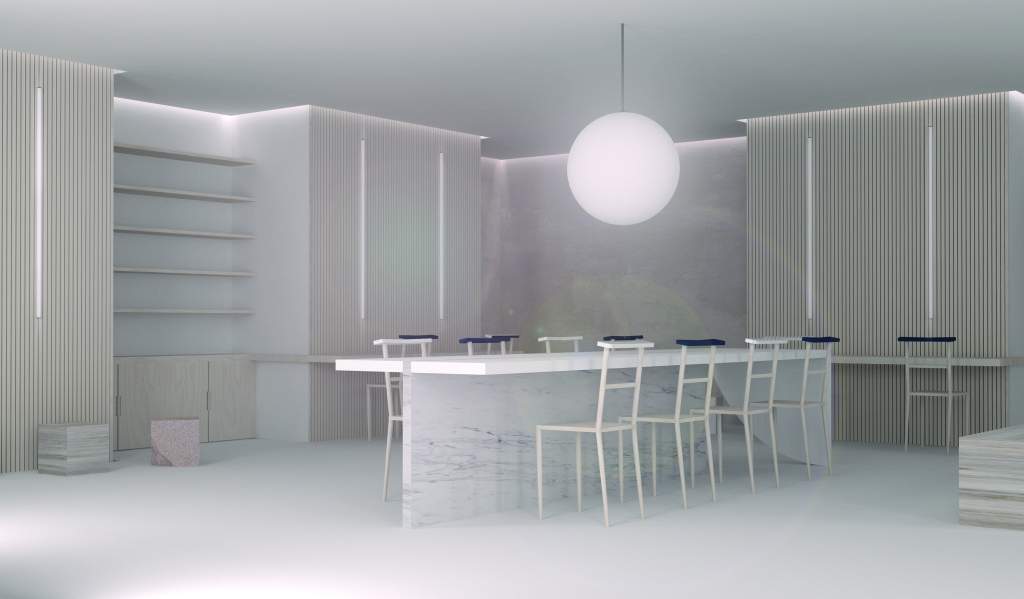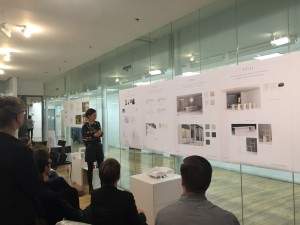There’s No Magic Without Process
BY VICTORIA HERBERT
“Oh how lovely, you’re studying interior design, and in New York!” runs the typical response when I tell people outside the creative industries what I’m doing.
This remark may be well-intentioned, but it can feel tinged with condescension, especially when the follow-up is often along the lines of: “But, do you really need to go to school for that?!”

Parsons School of Design
A semester away from graduating Parsons’ AAS Interior Design program (a two-year baptism of fire that drives spatial design and abstract, culturally-minded thinking), I’m realizing the need to defend what I do, to elucidate the hidden foundations of a designer’s process that happen long before the picking of pillows or furniture, as well as advocate the unparalleled merits of a formal training in an age awash with amateurism.
Working Iteratively
Most of us arrive at Parsons duly daunted by the prospect of all the software we are expected to learn (akin to several new languages at once), but blissfully unaware of how hard the design process is, which until this point has amounted to little more than Pinterest boards and magazine tears. Before anything else we are taught to abstract and work iteratively, something that feels baffling at first, but reveals its immense value as our understanding of the design process deepens. “Being asked to represent an abstract concept through numerous techniques forces one out of comfort zones and teases out subtle differences in the ways ideas manifest themselves through physical representations,” explains Justin Huxol, Studio 1 professor on Parsons’ AAS interior design program and director of HuxHux Design, New York. “This is essential [for designers] as it empowers students to deploy critical thought with a richness of tactics that have been used across creative disciplines for many years,” he continues.
The Importance of Conceptual Development
Learning to abstract and look at things through a macro lens is just the first hurdle in design school. Applying a concept formally and programmatically can be a journey of rapid cycling confusion and revelation, self-doubt, and elation that frequently has new students questioning its necessity. “Conceptual development affords you thoughtful design,” explains Huxol. “Without critical thought, a designer’s work is little more than a polite assemblage of problem solving. Concept development is taught because it allows design students the mental time and space for ingesting and synthesizing all the constraints of a given project. The design process can then yield a thoughtful proposal that embeds multiple variables conceptually while constructing an end result that is materially and spatially discreet and real.”
Interior Design is More Than Good Taste
In the field, design projects require a raft of contractors and military-style management to execute them, something good taste and digital mood-boarding alone cannot match. “The internet has enabled the average person to go and seek out decorative home items from every source imaginable,” says interior designer Mary Young of Young & Frances. This is not entirely a bad thing,” she continues, “because it gives people more power to really see their options, which helps us as designers. But the duty of the designer is to act like a Sherpa to your client – to guide them through the process to get the look they want. We have the knowledge of scale, how to put it together and experience of what works best and what doesn’t.”

A Victoria Herbert Design
There is No Magic Without Process
School-side, our designs are tested to the hilt, the rudiments of scale drawing and physical model-making remain central to our education and professional practice. Paper models provide 3-D sketches of our ideas, giving way to carefully fabricated scale versions with material representations as designs develop. For all the speed and sophisticated realism of 3-D modeling programs, nothing can trump the intuitive power of your hand and eye, nor the ‘happy accident’ of natural light hitting a surface in a certain way, thus presenting an exciting new design solution or idea. But it’s a process, and as I am learning, it’s only by working through these fundamental stages that you are able to spot, and then execute, the magic.






